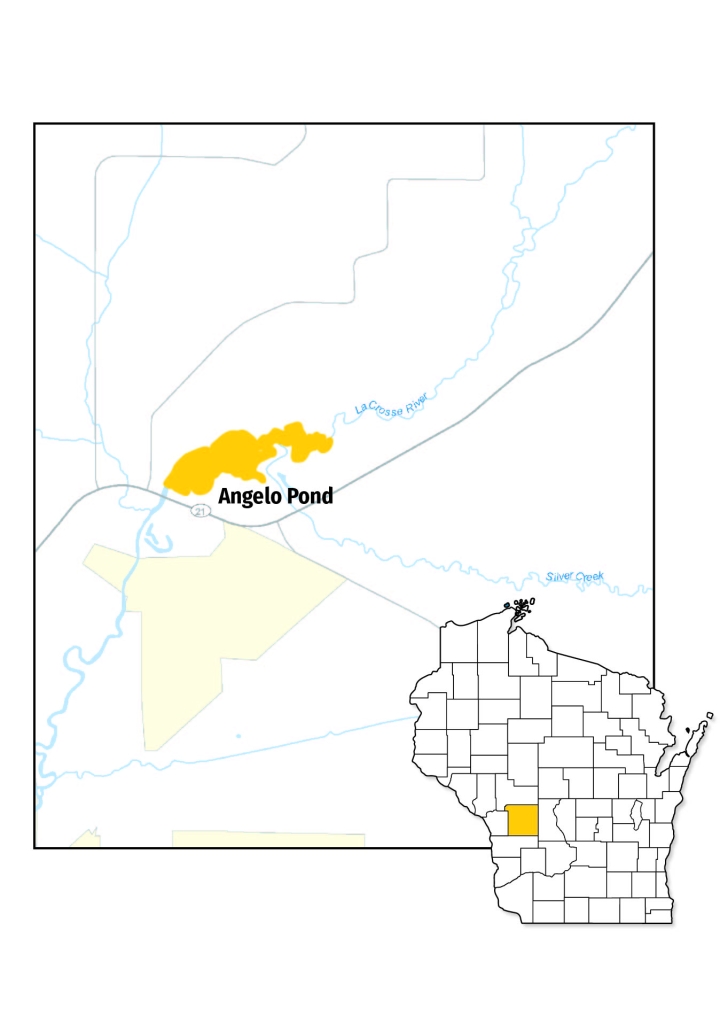Contact: DNR Office of Communications
DNRPress@wisconsin.gov
DHS Communications
dhsmedia@dhs.wisconsin.gov
New PFAS Fish Consumption Advisory Issued For Angelo Pond
Elevated Levels of PFAS Found In Several Fish Species
MADISON, Wis. – The Wisconsin Department of Natural Resources (DNR) and the Department of Health Services (DHS) today announced a new PFAS-based consumption advisory for bluegill, crappie, largemouth bass and northern pike from Angelo Pond in Monroe County based on fish sampling.
Elevated levels of PFOS (perfluorooctane sulfonate), a type of PFAS (per- and polyfluoroalkyl substances), were found in several fish species sampled from Angelo Pond, a 53 acre impoundment of the La Crosse River near Sparta in May of 2021.
As a result, the DNR and DHS recommend the following consumption guidelines for bluegill, crappie, largemouth bass, and northern pike harvested from the La Crosse River at Angelo Pond:
Angelo Pond Fish Consumption Advisory Guidelines
|
SPECIES |
PREVIOUS ADVISORY |
NEW ADVISORY |
|
Bluegill |
General/Statewide Advisory* |
1 meal/week for everyone |
|
Crappie |
General/Statewide Advisory* |
1 meal/month for everyone |
|
Largemouth Bass |
General/Statewide Advisory* |
1 meal/month for everyone |
|
Northern Pike |
General/Statewide Advisory* |
1 meal/month for everyone |
*The general/statewide consumption advice for women <50 and children is 1 meal/week for panfish and 1 meal/month for all other species. For women >50 and men, the general/statewide consumption advice is 1 meal/week for all species except for panfish, which are unrestricted.
In April 2021, the DNR and DHS issued a consumption advisory of 1 meal/month for brook and brown trout caught in Silver Creek, which flows into Angelo Pond. Sampling efforts continue in consultation with Fort McCoy due to results of elevated PFAS surface water samples received from Silver Creek in 2019.
PFAS are a group of human-made chemicals that have been used for decades in various products, such as non-stick cookware, fast food wrappers, stain-resistant sprays and certain types of firefighting foams that have made their way into the environment.
Health risks may increase when fish with high levels of PFAS are consumed. These can include increased cholesterol levels, decreased immune response, and decreased fertility in women, among other health effects. More information is available on the DHS website.
Following fish consumption advisories will help protect you from consuming excess PFOS, Polychlorinated Biphenyls (PCBs) and mercury. A complete list of up-to-date consumption advisories can be found in the DNR’s Choose Wisely booklet.
Additional fish consumption advice and information on the effects of PFAS can be found on the DNR’s website.


